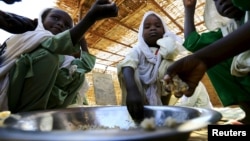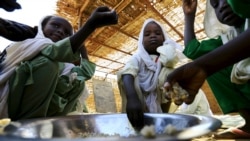Sudan has one of the highest rates of malnutrition in the world. In addition to widespread chronic undernutrition, approximately two million children in Sudan are acutely malnourished. Due to ongoing insecurity and the resultant widespread displacement and reduced access to agricultural lands, high levels of acute food insecurity persist in Darfur, South Kordofan, and Blue Nile.
To help save lives, reduce food insecurity and stabilize nutrition rates, the U.S. Agency for International Development announced that it has provided nearly $68 million in emergency food assistance to Sudan. Since 2011, USAID has provided over $1 billion in food and nutrition assistance to the people of Sudan.
USAID assistance will reach approximately 2.5 million Sudanese as well as refugees from South Sudan and other neighboring countries. This aid will be delivered through the World Food Program, which will help address the complex emergency arising from conflict, natural disasters, and widespread displacement in Sudan, including those severely affected by the impacts of the weather pattern known as El Niño.
In an effort to address the malnutrition rate in Sudan, which is the third-highest in the world, USAID will provide fortified foods for malnourished children under age five and pregnant or lactating women, emergency school feeding programs and food distributions to the most vulnerable and food-insecure populations.
The strong El Niño drought effects have caused below-average plantings and harvests of staple and cash crops across Sudan, all of which will lead to higher demand for food in 2016. Humanitarian assistance needs will also be higher than usual as the 2016 lean season began in March, two months earlier than usual. The projected number of acutely food-insecure people in Sudan is likely to reach 4.5 million during the peak lean season in 2016.
Protracted conflict inside Sudan and in neighboring countries has increased the number of refugees and internally displaced people suffering from food insecurity in Sudan. Over 360,000 refugees reside in Sudan. Since December 2013, over 190,000 South Sudanese have arrived, fleeing violence in their country. Ongoing fighting in Darfur has displaced a total of 2.6 million people. Another 1.7 million are displaced by conflict in Southern Kordofan and Blue Nile states.
As the largest international donor of humanitarian aid in Sudan, the United States is clearly committed to the well-being of the Sudanese people and generously provides needs-based assistance to all accessible areas and populations, including displaced and otherwise conflict-affected people.
















